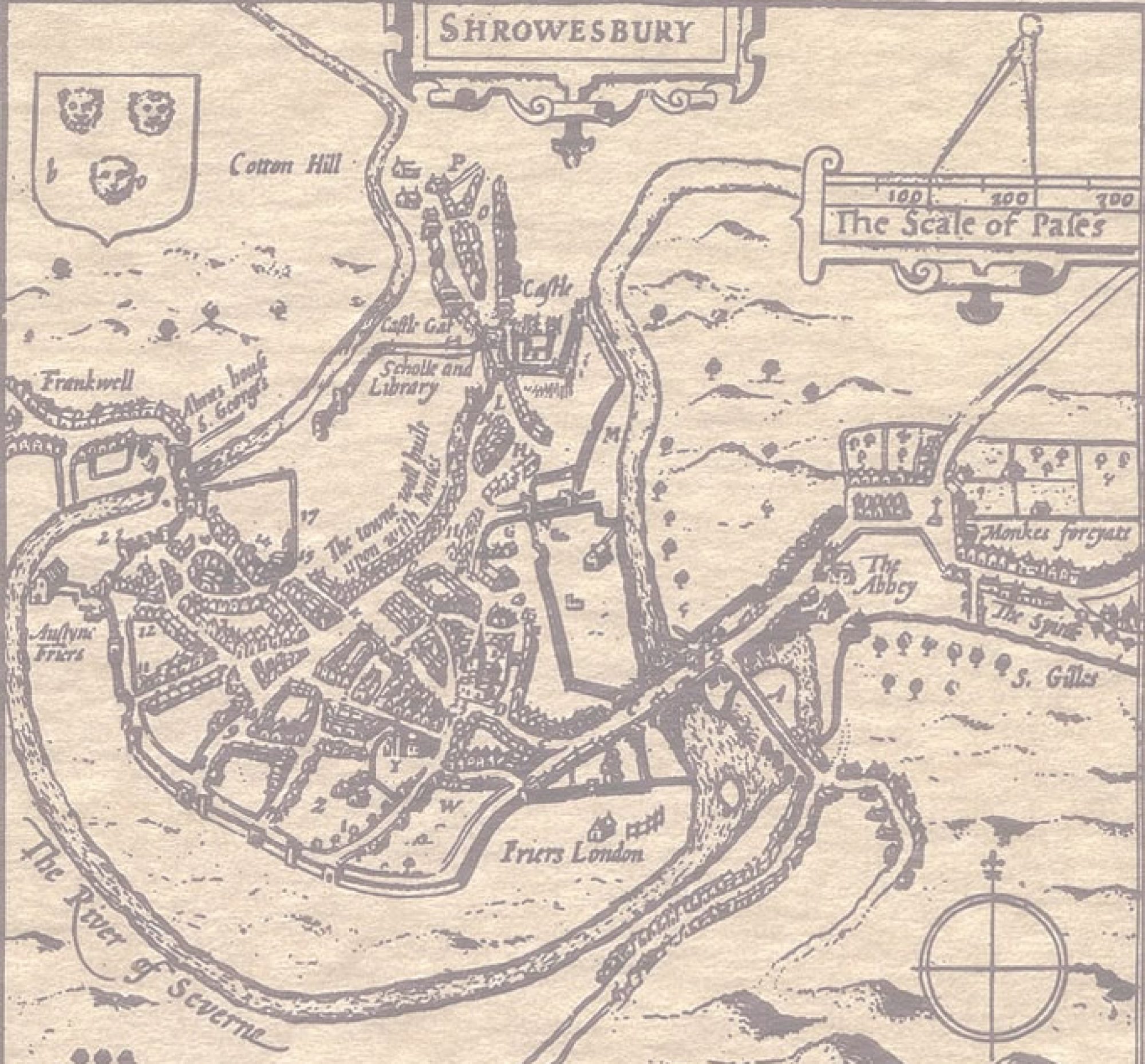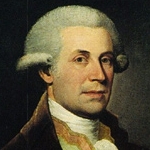
Pritchard Way is the part of Shrewsbury’s inner ring road between the Reabrook roundabout and Old Potts Way. It is named after Thomas Farnolls Pritchard (1723-77), a Shrewsbury architect and engineer whose main claim to fame is that he played a significant part in the design of the bridge that gives Ironbridge its name.
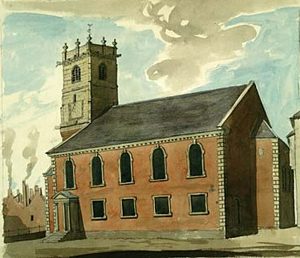
Thomas was the son of John and Hannah Pritchard. John is described as a ‘joyner’, or carpenter; Hannah’s maiden name was Farnolls, hence Thomas’ unusual middle name. [footnote 1] We know almost nothing of his personal life, save that he married Eleanor Russell (died 1768) on New Year’s Day 1751, and they had four children, three of whom died in infancy. [footnote 2] Presumably initially Thomas followed the same trade as his father, but, as we have seen in previous articles on the Carline and Haycock families, in those days the dividing line between carpenters, builders and architects was narrow, and it wasn’t long before Thomas was making his name as an architect. [footnote 3]
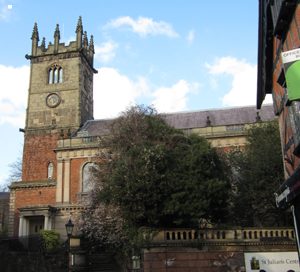
Much of his work involved alterations and improvements to existing buildings. His first significant commission, in 1747 (when he was aged just 24), was to adapt Broom Hall for the newly-created Salop Infirmary. Two years later he took charge of the rebuilding of St Julian’s Church, Shrewsbury. He left the medieval tower, whose lower part had been built in the 12th century, and the upper part in the 15th, and designed the rest in a classical style. Finding this rather plain, in Victorian times a new facade was built fronting Wyle Cop, though Pritchard’s original design can still be seen on the north side (facing St Alkmund’s Place). [footnote 4]
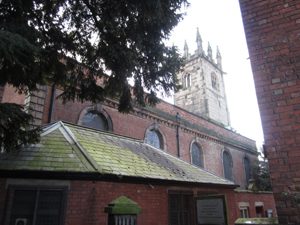
Pritchard also designed and built houses and other buildings from scratch, mostly in an elegant classical style. One example of his domestic architecture in Shrewsbury is Swan Hill Court House (built 1761), but his most obvious work is what was originally the Foundling Hospital (1765) in Kingsland. This is now one of the main buildings of Shrewsbury School, and is easily seen from the Quarry (though the clock tower is a later addition). [footnote 5]
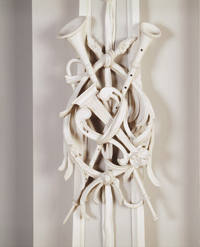
In addition to architecture, Pritchard specialised in interior designs and church monuments. He used the Rococo style, which consisted of elaborate designs of foliage, shells and scrolls symmetrically placed around frames. [footnote 6] We know much about this aspect of his work from the extraordinary survival of his Drawing Book, discovered in 1964 in the library of the American Institute of Architects, Washington DC. [footnote 7] In this book are mentioned some of the wonderfully gifted carvers and other craftsmen who executed Pritchard’s designs, such as John van der Hagen and John Nelson. [footnote 8] Some of the best of this workmanship can be seen at Croft Castle, a property owned by the National Trust between Ludlow and Leominster.
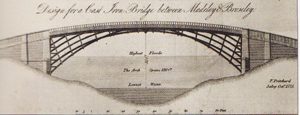
Later in his life he became interested in bridges. His plans for a new English Bridge in Shrewsbury were rejected, but he did design and build a bridge at Stourport in 1774, which apparently had a cast-iron ‘centre-piece’ (perhaps the arch). Maybe this bridge encouraged Pritchard, working with ironmasters Abraham Darby III and John Wilkinson, that a more ambitious all iron bridge was possible. Pritchard produced the early designs for what we now know as ‘The Ironbridge’, and although he became ill and died during the project, the final bridge is essentially as he designed it. For this reason there is a good deal of truth to the claim that Pritchard was ‘the inventor of cast iron bridges’. [footnote 9]
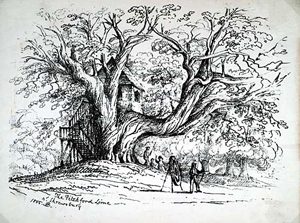
A more homely footnote to Pritchard’s life concerns the famous tree house at Pitchford Hall. It is thought to be one of the oldest in the world, having been first recorded in 1692. It was renovated in 1760, and the interior bears many resemblances to the work of Thomas Pritchard. [footnote 10] Its most famous visitor was probably Princess (later Queen) Victoria, who came to Pitchford in 1832 at the age of 13. She recorded in her diary that ‘[after church] we came home and walked about the grounds, and I went up a staircase to a little house in a tree’ [footnote 11]. I imagine that Pritchard would never have guessed that this inconsequential bit of his work would have been enjoyed by royalty!
Footnotes
[1] SA St Julian’s Parish Register, 11.5.1723
[2] Julia Ionides, Thomas Farnolls Pritchard of Shrewsbury, Architect and ‘Inventor of Cast Iron Bridges’, Dog Rose Press, Ludlow, 1999, p.28. Much of the background material for this article is from this source.
[3] Ionides, op.cit, p.29
[4] http://search.shropshirehistory.org.uk/collections/getrecord/CCS_MSA1052/, accessed 12.3.2013; John Leonard, The Churches of Shropshire and their Treasures, Logaston Press, 2004, p.160
[5] Christabel Davies, Thomas Farnolls Pritchard, no date (nd), SA BP96 v.f., 8337/1; Robin Chaplin, In Search of Thomas Farnolls Pritchard, n.d. , SA BP96v.f., 8338/1
[6] James Stevens Curl, Oxford Dictionary of Architecture, Oxford 1999
[7] Ionides, op.cit., Appendix 3
[8] Ionides, op. cit., p.53 ff
[9] Neil Cossons and Barrie Trinder, The Iron Bridge, Phillimore, 2002, pp. 9-18
[10] http://pinterest.com/pin/294493263103282558/ , accessed, 18.3.2013
[11] www.queenvictoriasjournals.org/search – 28.10.1832, accessed 18.3.2013
